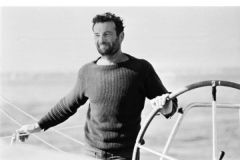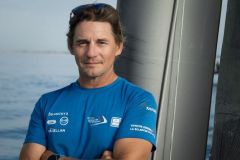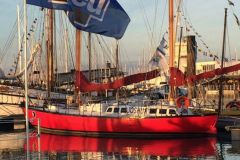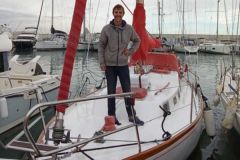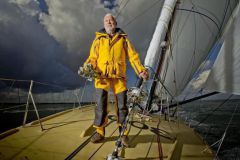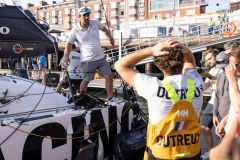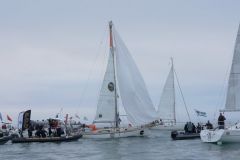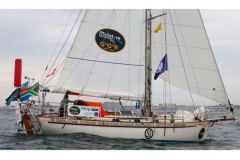Francis Chichester and the English Transat
Francis Chichester is a British aviator with a passion for records: solo flight record between New Zealand and Australia, discovery of islands in the Pacific, solo round-the-world flight... Challenges that bring him more or less satisfaction.
After the Second World War, he devoted himself - late in life - to a new passion: sailing. In 1960, at the age of 59, he participated in the first edition of the Transat, which he won. Four years later, he tried again, but was robbed of the victory by a little Frenchman, a rising star in ocean racing, Eric Tabarly.

The Transat 1964
A solo round-the-world trip with almost no stopover
In 1966, the British sailor decided to embark on a solo round-the-world voyage on his ketch Gipsy Moth IV of 16 m. Of course, there have been many other solo round-the-world sailors before him - the British Joshua Slocum (1895-1898), the Argentinian Vito Dumas (1942-1943) or Marcel Bardiau (1950-1958) to name but a few - but never without a stopover. Chichester wants to be the first to succeed in this incredible challenge and to beat the crossing records achieved by the clippers at the time!
He left England on August 27, 1966 and completed his circumnavigation in 274 days (266 days without counting the stopover in Sydney). His journey was widely publicized by the Sunday Times, a Sunday newspaper distributed in the United Kingdom and Ireland, and on his return on May 28, 1967, he was made a Knight Commander of the Order of the British Empire. He is, after Vito Dumas, the first navigator to have completed a solo circumnavigation from west to east via the great capes.
Chichester inspired many sailors, who in turn wanted to attempt this solo round-the-world voyage, but without any stopover. Never before seen!

The first non-stop single-handed round-the-world race
This is how the idea began to germinate in the minds of the founders of the Sunday Times. Since there was a demand, they had to create a great race! And so, in March 1968, The Sunday Times Golden Globe Race was born, at the initiative of Chichester and the British newspaper.
The Golden Globe Challenge is more like a challenge than a race, since the rules are simple: start between June 1 and October 31, from any port located north of the 40th parallel, sail around the globe via the three capes - Good Hope, at the southern tip of Africa, Cape Leeuwin, southwest of Australia, and Cape Horn at the tip of Tierra del Fuego - and return to the same port, without having made a stopover, or received any outside help.
Two prizes are at stake, one for the one who will succeed in completing the course and a second for the one who will complete it the fastest.

This is how the greatest single-handed race ever organized was born, the ancestor of today's great round-the-world sailing races. The rest we know, out of the nine participants - more adventurers than racers - only one came full circle, Robin Knox-Johnston on his ketch the Suhaili. It was also on this race that the legend Moitessier was born, but that's another story.





